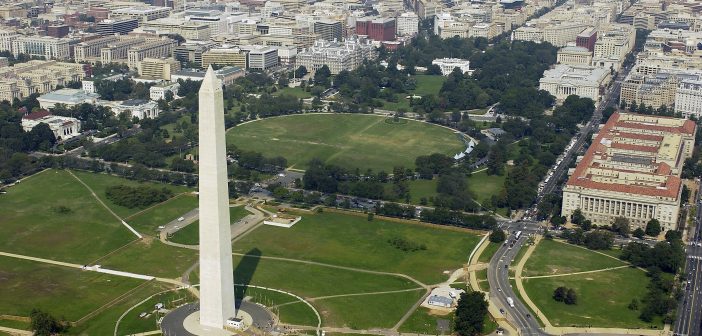On February 21, 1885, President Chester Arthur dedicated The Washington Monument, an towering obelisk in the nation’s capital honoring America’s first president and commander-in-chief.
“The 555-foot-high marble obelisk was first proposed in 1783, and Pierre L’Enfant left room for it in his designs for the new U.S. capital,” according to History.com’s “This Day in History” blog.
According to the Library of Congress, the first ads calling for design proposals appeared in newspapers on March 4, 1836. Robert Mills was eventually chosen for the job, according to the National Parks Service, and the Army Corps of Engineers, overseen by Col. Thomas Casey, built it.
However, as Lindsey Richey notes on TeachingAmericanHistory.org, factors including tight cash and the Civil War delayed the monument’s completion until 30 years after Mills’ death.
“The delays ended when a small civilian-military team from the Corps of Engineers, led by Casey, took over construc- tion management,” wrote Col. Paul Taylor, former Army Corps of Engineers chief of staff, in the foreword to Louis Torres’ 1984 book “To the immortal name and memory of George Washington”: The United States Army Corps of Engineers and the Construction of the Washington Monument.
Richey wrote that, though the delay caused “a difference in stone color that can be seen about 30% of the way up, where construction was halted for so long,” the monument was eventually finished using “a combination of marble, granite and bluestone gneiss.”
“In 1888, four years after the Monument was completed, Casey was appointed by President Grover Cleveland as Brigadier General and Chief of Engineers of the U.S. Army, a position he held until 1895,” according to an article Richard G. Weingardt wrote for the American Society of Civil Engineers Library in 2011.
While the preview is not large enough to embed here, you can view a photo from the 1885 dedication at the Library of Congress’ website here.




